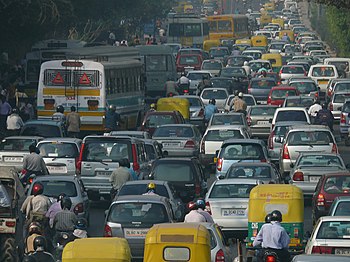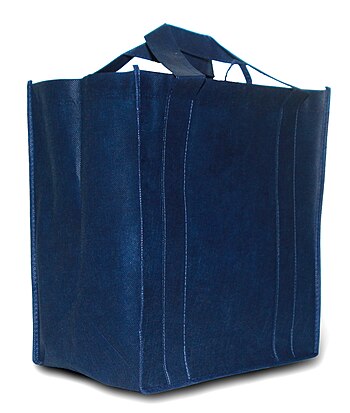Here are some of the many benefits of going green with your transportation, along with a few tips for making the transition:
1. Decreased Congestion Means Less Gas
 |
| (Photo credit: Wikipedia) |
Not only are you lowering your gas consumption by not driving a car, you're also making other cars on the road more fuel efficient by not driving.
2. Voting with Your Wallet
It's one thing to say you support environmentalism. It's another thing to vote with your wallet.
When you stop spending money on gas-guzzling vehicles, you take your vote out of the automobile industry. You're also increasing the amount of money public transit is earning, which in time translates to better, more fuel efficient public transportation systems.
3. Get Exercise without Trying
A lot of people have a hard time regularly scheduling exercise into their daily routines.
Getting in the habit of riding a bicycle or walking to take public transportation makes it easy to get your exercise in every day. You're either walking more or cycling or both.
 |
| (Photo credit: Wikipedia) |
Driving a car costs a lot of money. You have your gas costs, which can add up to hundreds of dollars a month. In addition you have automotive repair and maintenance, which can also add up to a lot of money every year.
That's not even taking into account the actual cost of the car. Generally you're spending several hundred dollars a month on a car loan or lease. If you're buying a car outright, you're often tying up tens of thousands of dollars of your net worth.
All in all, not owning a car can save you buckets of money.
Tips for Making the Transition
The most important thing for making the transition smoothly is to plan how you need to get to the various places in your daily life before you make the switch.
If you already know how to get everywhere you want to get and how long it'll take, that'll take a lot of the difficulty out of the picture.
Learn to use Google Maps or a smartphone app to check bus routes and public transportation routes for areas that you're not familiar with traveling to.
For the first couple weeks, leave a little earlier than you think you need to so you can get used to the system while still being on time.
Going green with your transportation allows you to save money, reduce the world's pollution, help improve public transportation and even get some exercise - it's a win-win for everyone!






